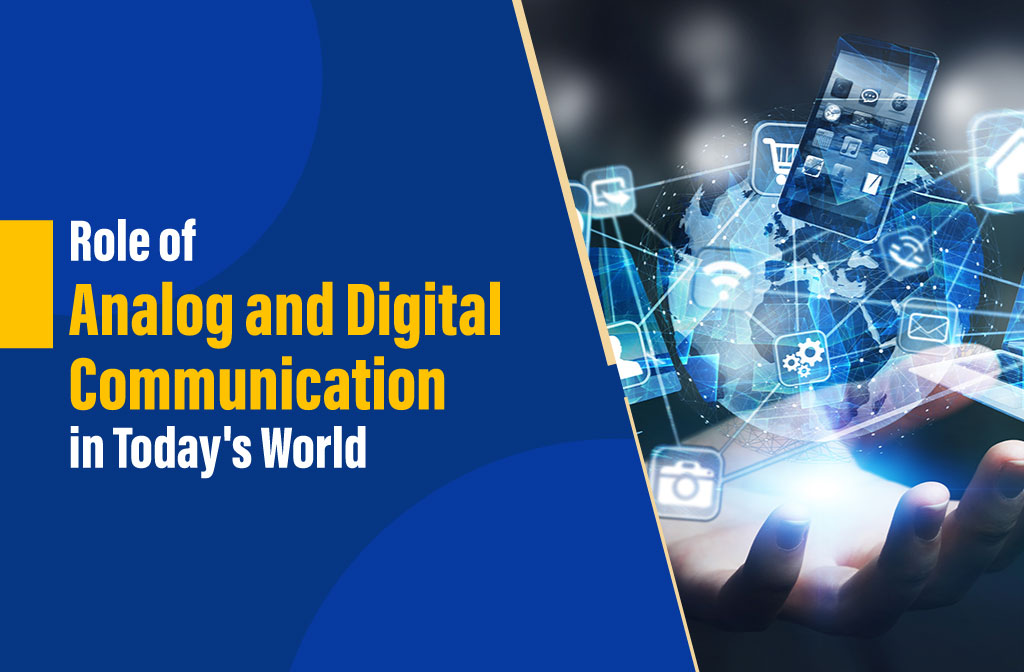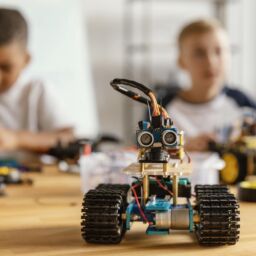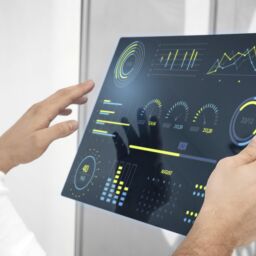
In daily life, communication occurs in the form of signals that generally pass through analog sound signals. These analog signals are sent through the wire with different techniques when it comes to communicating with users who are far. Then what does digital communication do? The use of analog signals for long-distance communication has significant issues like distortion and interference. These challenges are overcome with the use of digitized signals. These communications concepts you may learn from the top electronics and communication engineering colleges in Coimbatore. However, this blog highlights the role of these analog and digital signals utilized in today’s world which engineers should be aware of.
What is analog communication?
Two-way communications were one typical application for an analog transmission. The company embraced this technology for a wide range of industrial uses. Without a doubt, the aviation sector expanded to employ it for information transfer.
Radio was the primary usage of analog communication in many homes at the period, followed by television in later decades. But as the technology advanced, its limitations were soon reached. Innovation and progress quickly ran out of room.
Even while analog communication technologies are still widely used today, future developments in communication technology will eventually involve digital transmission.
What are the advantages of using analog signals?
- The processing is simpler.
- Ideal for transmitting both voice and video.
- They can convey information that is more sophisticated and has a far higher density.
- Compared to digital signals, it consumes less bandwidth.
- As a result, changes in physical phenomena like sound, light, temperature, position, or pressure are conveyed accurately.
- Electrical tolerance is less critical for analog communication systems.
What is digital communication?
Rather than sending continuous values from a source to a destination, a digital communication system employs a digital signal to send individual values. Via point-to-multipoint or point-to-point channels, the digital data is transmitted. Samples of analog signals are obtained, and a digital signal is formed from them. Digital signals have two states: 0 and 1, which stand for On and Off. Modulation comes after sampling and quantization for digital signals.
What are the advantages of using digital signals?
- Information is transmitted with reduced interference, distortion, and noise.
- It is simple to replicate in large quantities for an extremely low cost.
- This is more adaptable because digitally programmable systems can be used to change DSP processes.
- Since digital data is easily compressed and encrypted, it is more safe.
- mistake detection and repair codes can lower the possibility of a mistake occurring, and digital systems are more accurate generally.
- Semiconductor chips make it simple to store on any magnetic or optical medium.
- Long distances can be covered via transmission.
Comparison of analog and digital signals:
- Although analog equipment is less expensive than its digital different forms, the amount of data that can be transferred at once is limited.
- The Telecommunications sector has been significantly impacted by digital technology.
- Undoubtedly, the conflict between analog and digital communications has found a home in the music industry.
- Though many music lovers are huge fans of MP3 files and streaming music on electronic devices, it wasn’t too long ago that conventional albums began to surpass hard drives for the first time in decades.
- Undoubtedly, the conflict between analog and digital communications has found a home in the music industry.
- Though many music lovers are huge fans of MP3 files and streaming music on electronic devices, it wasn’t too long ago that conventional albums began to surpass hard drives for the first time in decades.
- While requiring less electricity, digital communications demand a large bandwidth. digital devices are significantly more adaptable in terms of application, portability, and compactness.
- However, some digital devices still require analog circuits, and analog may send data at higher frequencies than digital.
- Even though a decoder can occasionally convert a digital signal back to analog, many people still haven’t completely embraced digital technology.
Future of digital communications:
The term “Internet of Things” (IoT) describes the way common things are connected digitally. With new channels of communication made available with this development. increasing automation and efficiency.
As 5G technology is implemented, real-time communication across a variety of platforms will be possible because of its promised lightning-fast internet rates and decreased latency. Advancements in telemedicine, virtual reality, and driverless vehicles will be made possible by this technology.
Conclusion:
Now, machines are interacting with the use of binary digital data and microprocessors analyze the analog data and convert it into digital form. In recent times, technological evolution has increased the importance of electronic devices and made electronics & communication a crucial department in various industries. Therefore, engineers can get a huge scope in this field, and enroll in electronics and communication engineering colleges in TamilNadu, if you choose your career as an electrical engineer.












